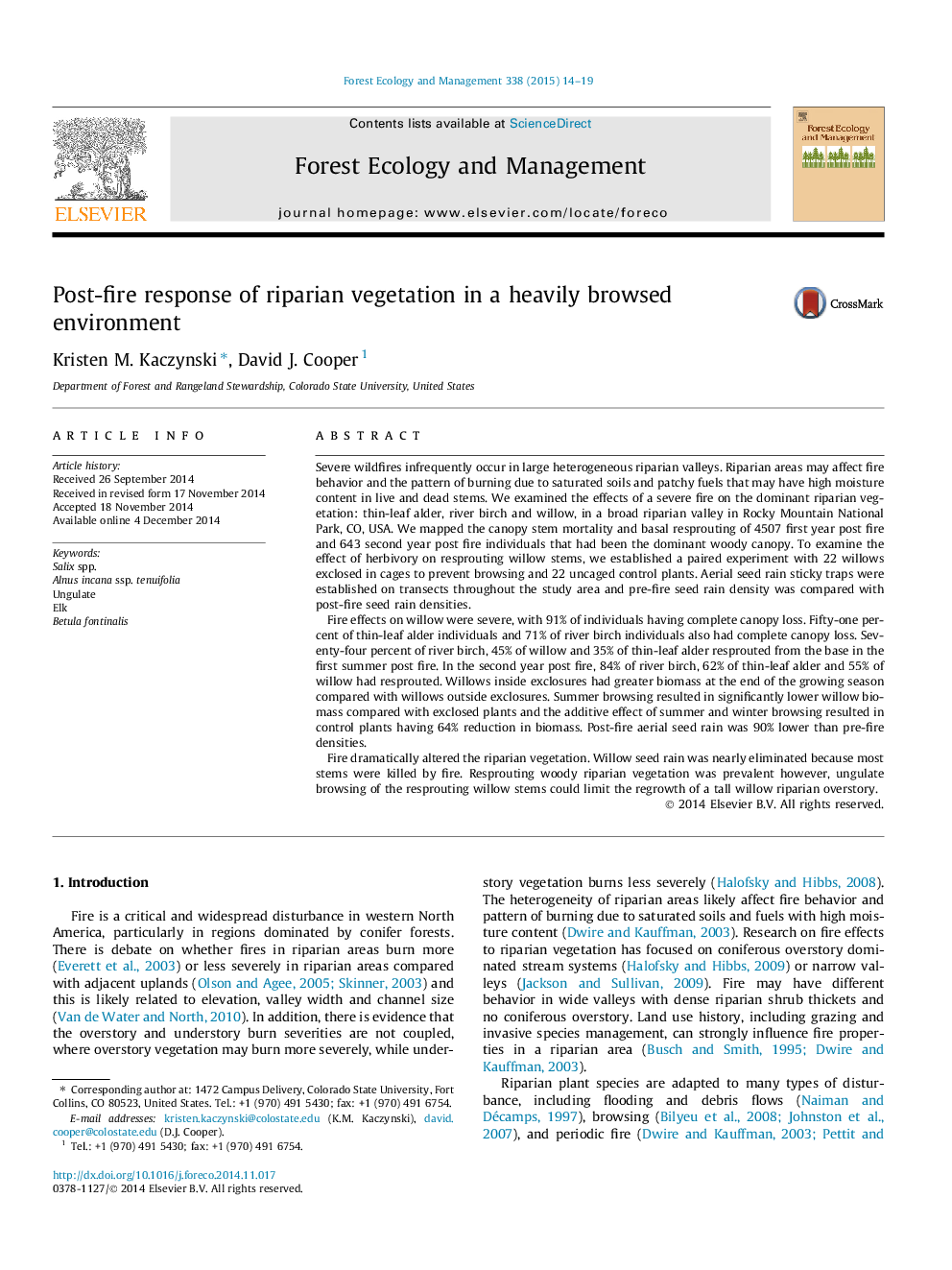| کد مقاله | کد نشریه | سال انتشار | مقاله انگلیسی | نسخه تمام متن |
|---|---|---|---|---|
| 86376 | 159183 | 2015 | 6 صفحه PDF | دانلود رایگان |
• Large, severe fires are uncommon in riparian valleys dominated by willow.
• Willows, alders and birch exhibited basal resprouting regardless of burn severity.
• Summer and winter browsing on willows resulted in 64% reduction in biomass.
• Willow seed rain was dramatically reduced one year post fire.
• Browsing and lack of seed will affect willow regeneration altering the community.
Severe wildfires infrequently occur in large heterogeneous riparian valleys. Riparian areas may affect fire behavior and the pattern of burning due to saturated soils and patchy fuels that may have high moisture content in live and dead stems. We examined the effects of a severe fire on the dominant riparian vegetation: thin-leaf alder, river birch and willow, in a broad riparian valley in Rocky Mountain National Park, CO, USA. We mapped the canopy stem mortality and basal resprouting of 4507 first year post fire and 643 second year post fire individuals that had been the dominant woody canopy. To examine the effect of herbivory on resprouting willow stems, we established a paired experiment with 22 willows exclosed in cages to prevent browsing and 22 uncaged control plants. Aerial seed rain sticky traps were established on transects throughout the study area and pre-fire seed rain density was compared with post-fire seed rain densities.Fire effects on willow were severe, with 91% of individuals having complete canopy loss. Fifty-one percent of thin-leaf alder individuals and 71% of river birch individuals also had complete canopy loss. Seventy-four percent of river birch, 45% of willow and 35% of thin-leaf alder resprouted from the base in the first summer post fire. In the second year post fire, 84% of river birch, 62% of thin-leaf alder and 55% of willow had resprouted. Willows inside exclosures had greater biomass at the end of the growing season compared with willows outside exclosures. Summer browsing resulted in significantly lower willow biomass compared with exclosed plants and the additive effect of summer and winter browsing resulted in control plants having 64% reduction in biomass. Post-fire aerial seed rain was 90% lower than pre-fire densities.Fire dramatically altered the riparian vegetation. Willow seed rain was nearly eliminated because most stems were killed by fire. Resprouting woody riparian vegetation was prevalent however, ungulate browsing of the resprouting willow stems could limit the regrowth of a tall willow riparian overstory.
Journal: Forest Ecology and Management - Volume 338, 15 February 2015, Pages 14–19
